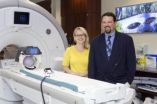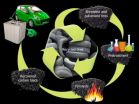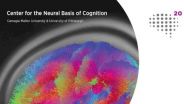(Press-News.org) Depression may be better predicted and understood now that University of Illinois at Chicago researchers have discovered that young adults who previously experienced the mental illness have hyper-connected emotional and cognitive networks in the brain.
UIC researchers used functional magnetic resonance imaging to examine the brain connectivity of young adults ages 18 to 23 while they were in a resting state. Thirty unmedicated young adults who had previously experienced depression and 23 healthy controls were used in the study, which has been published online in the journal PLOS ONE.
"We wanted to see if the individuals who have had depression during their adolescence were different from their healthy peers," said Rachel Jacobs, research assistant professor in psychiatry at UIC's Institute for Juvenile Research, the lead author of the study.
The researchers found many regions that are "hyper-connected – or talking to each other a little too much – among those who have a history of depression," Jacobs said. These hyper-connected brain networks were related to rumination, with individuals thinking about a problem over and over without actively trying to come up with a solution.
"Rumination is not a very healthy way of processing emotion," said Scott Langenecker, associate professor of psychiatry and psychology at UIC and corresponding author of the study. "Rumination is a risk factor for depression and for reoccurrence of depression if you've had it in the past."
The researchers also looked at cognitive control (the ability to engage and disengage in thought processes or behaviors), which is a predictor of response to treatment and also relapse of illness.
"Cognitive control and rumination, as you might expect, are related to each other. As rumination goes up, cognitive control goes down," said Langenecker.
The researchers will follow these young adults over time to see whether or not these hyper-connectivities predict who will or won't have a recurrence of illness.
Psychosocial and medication treatments for depression can be helpful, said Jacobs, but within two years of recovery half of those teenagers will relapse.
The transition to adulthood, a time when brain networks are nearly mature, may be a critical window for interventions.
"If we can help youth learn how to shift out of maladaptive strategies such as rumination, this may protect them from developing chronic depression and help them stay well as adults," Jacobs said.
"We think that depression is a developmental outcome, and it's not a foregone conclusion that people need to become depressed. If we can provide prevention and treatment to those people that are most at risk, we might be able to prevent depression, reduce the number of depressive episodes, or reduce their severity," said Langenecker.
INFORMATION:
The study was supported by the National Institute of Mental Health (Grant R01MH091811) and the UIC Center for Clinical and Translational Science (Grant UL1TR00050, National Center for Advancing Translational Sciences, National Institutes of Health). The fMRI studies were conducted at UIC's Center for Magnetic Resonance Research.
Brain networks 'hyper-connected' in young adults who had depression
2014-08-27
ELSE PRESS RELEASES FROM THIS DATE:
Malaria symptoms fade on repeat infections due to loss of immune cells, UCSF-led team says
2014-08-27
Children who repeatedly become infected with malaria often experience no clinical symptoms with these subsequent infections, and a team led by UC San Francisco researchers has discovered that this might be due at least in part to a depletion of specific types of immune cells.
Working in Uganda, one of the most malaria-plagued nations in Africa and one in which individuals are repeatedly exposed to the malaria parasite, UCSF scientists found that a depletion of immune cells known as gamma delta T cells diminishes inflammatory responses in infected children — responses ...
Tracking spending among the commercially insured
2014-08-27
LEBANON, NH – Recent growth in health care spending for commercially insured individuals is due primarily to increases in prices for medical services, rather than increased use, according to a new study led by researchers at The Dartmouth Institute for Health Policy & Clinical Practice, published in the August issue of the American Journal of Managed Care.
There is increasing concern that consolidation in the health care marketplace will lead to increased prices faced by payers and, ultimately, consumers," said Carrie Colla, PhD, assistant professor at The Dartmouth ...
Encyclopedia of how genomes function gets much bigger
2014-08-27
A big step in understanding the mysteries of the human genome was unveiled today in the form of three analyses that provide the most detailed comparison yet of how the genomes of the fruit fly, roundworm, and human function.
The research, appearing August 28 in in the journal Nature, compares how the information encoded in the three species' genomes is "read out," and how their DNA and proteins are organized into chromosomes.
The results add billions of entries to a publicly available archive of functional genomic data. Scientists can use this resource to discover ...
Rubber meets the road with new ORNL carbon, battery technologies
2014-08-27
OAK RIDGE, Tenn., Aug. 27, 2014 – Recycled tires could see new life in lithium-ion batteries that provide power to plug-in electric vehicles and store energy produced by wind and solar, say researchers at the Department of Energy's Oak Ridge National Laboratory.
By modifying the microstructural characteristics of carbon black, a substance recovered from discarded tires, a team led by Parans Paranthaman and Amit Naskar is developing a better anode for lithium-ion batteries. An anode is a negatively charged electrode used as a host for storing lithium during charging.
The ...
Gang life brings deep health risks for girls
2014-08-27
Being involved in a gang poses considerable health-related risks for adolescent African American girls, including more casual sex partners and substance abuse combined with less testing for HIV and less knowledge about preventing sexually transmitted diseases, according to a new study.
The findings come from a questionnaire survey with 188 African American females, ages 13 to 17, who were incarcerated in a short-term detention facility in Atlanta. The data showed that low self-esteem, emotional problems, trauma history, low parental monitoring, friends who engage in risky ...
Kessler Foundation researchers publish first study of brain activation in MS using fNIRS
2014-08-27
West Orange, NJ. August 27, 2014. Using functional near infrared spectroscopy (fNIRS), Kessler Foundation researchers have shown differential brain activation patterns between people with multiple sclerosis (MS) and healthy controls. This is the first MS study in which brain activation was studied using fNIRS while participants performed a cognitive task. The article, "Neuroimaging and cognition using functional near infrared spectroscopy (fNIRS) in multiple sclerosis," was published online on June 11 by Brain Imaging and Behavior. Authors are Jelena Stojanovic-Radic, PhD, ...
Water 'thermostat' could help engineer drought-resistant crops
2014-08-27
DURHAM, N.C. -- Duke University researchers have identified a gene that could help scientists engineer drought-resistant crops. The gene, called OSCA1, encodes a protein in the cell membrane of plants that senses changes in water availability and adjusts the plant's water conservation machinery accordingly.
"It's similar to a thermostat," said Zhen-Ming Pei, an associate professor of biology at Duke.
The findings, which appear Aug. 28 in the journal Nature, could make it easier to feed the world's growing population in the face of climate change.
Drought is the ...
Detecting neutrinos, physicists look into the heart of the sun
2014-08-27
AMHERST, Mass. – Using one of the most sensitive neutrino detectors on the planet, an international team of physicists including Andrea Pocar, Laura Cadonati and doctoral student Keith Otis at the University of Massachusetts Amherst report in the current issue of Nature that for the first time they have directly detected neutrinos created by the "keystone" proton-proton (pp) fusion process going on at the sun's core.
The pp reaction is the first step of a reaction sequence responsible for about 99 percent of the Sun's power, Pocar explains. Solar neutrinos are produced ...
Flexing the brain: Why learning tasks can be difficult
2014-08-27
VIDEO:
Learning a new skill is easier when it is related to an ability we already have. For example, a trained pianist can learn a new melody easier than learning how...
Click here for more information.
PITTSBURGH—Learning a new skill is easier when it is related to an ability we already have. For example, a trained pianist can learn a new melody easier than learning how to hit a tennis serve.
Scientists from the Center for the Neural Basis of Cognition (CNBC) – a joint program ...
Stanford researchers work to understand gene expression across organisms
2014-08-27
Fruit flies and roundworms have long been used as model organisms to learn more about human biology and disease. Now, researchers at the Stanford University School of Medicine have found that although many aspects of regulatory networks are conserved among the three distantly related organisms, other differences have emerged over evolutionary time.
These differences may explain why, for example, worms slither, flies fly and humans walk on two legs, even though they all use the same basic genetic building blocks.
"We're trying to understand the basic principles that ...




